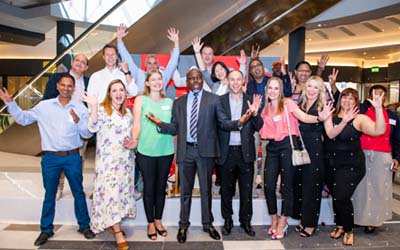As South Africa transitions from fossil fuels to a more diversified energy mix, the contribution of renewable energy is expected to grow.
No longer is there a trade-off between clean and least-cost energy. The updated Integrated Resource Plan envisages that renewables will dominate the build-out of new energy over the next 30 years.
The Renewable Energy Independent Producer Power Procurement Programme (REIPPPP) is an established tender process that was launched in South Africa in 2012 to facilitate private sector investment into grid-connected renewable energy generation. Following four successful REIPPPP bid windows, investment in renewable energy has given rise to a new asset class that is distinct from general infrastructure and development.
Read, What to ask your asset manager: Responsible Investing
With a long-term (10-15 year) investment horizon, renewable energy project assets are not very liquid, but typically offer stable, inflationary-linked returns. A diversity of assets is important to any investment approach and should be spread over multiple projects, developers, geographic locations, technologies and suppliers, to limit any over-concentration of risk.
Here are some useful questions for an investor when reviewing a renewable energy asset:
The general profile of the renewable energy project
- What technology is the project invested in? The simplest technology to install, operate and maintain is Solar Photovoltaic (PV), followed by Wind, Biomass, Hydro, and, lastly, Concentrated Solar Power (CSP), which is the most expensive but can store energy for peak hour demand.
- Does the project have a signed Power Purchase Agreement (PPA) with Eskom?
- At what stage of the REIPPPP process is the project? Prior to tender, the project is in development stage until it is bid-ready. If selected under REIPPPP, it is awarded a Preferred Bid, followed by a signed PPA, project construction and, finally, operations - once the Commercial Operation Date (COD) is achieved.
- What is the size of the project’s capacity in megawatts (MWs)? One MW is enough to power around 650 homes. Wind projects are measured by the number of turbines: smaller projects have fewer turbines, a higher risk of concentration and a disproportionately bigger impact on output if any one or more turbines fail.
The stakeholders in the renewable energy project
- How much experience does the developer/lead sponsor of the project have in prior bid windows of the REIPPPP? Given the increasingly competitive nature of each successive bid window, the experience of previous preferred bidders should benefit the prospects of a project.
- What is the track record of the technology supplier in South Africa? Equipment might have fared successfully in other regions but has failed in South Africa due to the harshness of our climate.
- Who is the shareholder of reference in the project and is it a strategic entity with a sufficiently strong balance sheet and energy experience, such as having built and operated energy projects internationally?
- What is the Black Empowerment stake in the project and how broad based is it? In order to win a preferred bid in the REIPPPP, the minimum stake required under the last bid window was 30%.
Project location and resource strength (refer to the site locations section below)
- Where is the project located, and what is its distance from the grid? Many areas, such as the Northern Cape, are over-concentrated with solar PV projects and grid capacity is inadequate to connect new projects unless significant expenditure is made by Eskom to upgrade the grid infrastructure.
- Over what period of time has the strength of the resource been tested? A longer period is better, as many projects have failed to meet budget because of inadequate resource test data that has resulted in inaccurate resource strength predictions and consequent underperformance of projects.
Debt terms and project metrics
- How long is the debt repayment term? As the PPA is limited to 20 years, a longer debt repayment term results in a shorter ungeared tail in the project. Free cash flow spikes when the project debt is settled and a shorter ungeared tail results in a smaller cash buffer to cover a protracted debt redemption.
- What are the forecast minimum and the covenanted financial metrics in the project, such as the minimum debt service cover ratio (DSCR) and the minimum loan life cover ratio (LLCR)? These ratios are important measurements of the amount of cash available to cover the debt repayment obligations.
- How sensitive is the cash flow to a stress test of the assumptions behind the forecast energy production and revenue generation? If assumptions such as the cost of construction or operational overheads increase, or if completion is delayed or resource strength is lower, the debt repayments should remain adequately covered.
- How experienced is the lender consortium and which party has arranged the finance package? Debt structuring experience is important and the arranger should be aligned with the lenders by way of a co-investment on the same terms and conditions.
Social and enterprise development
- What is the extent of engagement by the project with the local community and is there a clear social and enterprise development plan with measureable outcomes and buy-in by the community? Labour unrest and local community protests about unmet expectations from a REIPPPP investment has elevated energy production risk in some projects.
The replies to these questions will help an investor assess some of the key risk factors in a renewable energy project and those that could have a direct bearing on the returns from their investment. (Please contact our client relationship team if you would like any further information).
Site locations

Most of the wind farm developments are located in coastal areas where the wind strength is higher and more predictable than inland. In contrast, the solar parks are typically located in the Northern Cape and Limpopo regions where sun incidence is the highest in the country and the landscape is flat, ensuring minimal shadow effect.
The Northern Cape, offering the most favourable solar radiation levels, has attracted the majority of the Solar PV projects and all the CSP projects. The province, host to 48 of the 92 IPP projects in the country, is expected to contribute 3 566MW to the total procured renewable energy capacity once construction of Round 4 is complete.
The Eastern Cape has attracted 17 of the 92 IPPs, totalling 1 509MW, the second largest share of total procured capacity. Corresponding to the province’s excellent conditions for the generation of on-shore wind power, 16 of these are wind projects, representing 43% of the procured wind power to date.
There are 11 IPP projects located in the Western Cape, contributing 592MW to the total procured capacity. The number of projects is shared roughly equally between 6 wind (458MW) and 5 Solar PV (134MW) IPPs.
The remaining 16 IPP projects are distributed among the other provinces, with Free State and North West Province sharing 5 each, Limpopo 3, and there is one project per province in Mpumalanga, Gauteng and KwaZulu-Natal.
Wind, Solar PV and CSP have attracted the most significant share of the investment across all REIPP bid windows to date:

Glossary
(refer to PDF version)
View the PDF version of Renewable energy investments: What to ask your manager.


